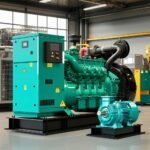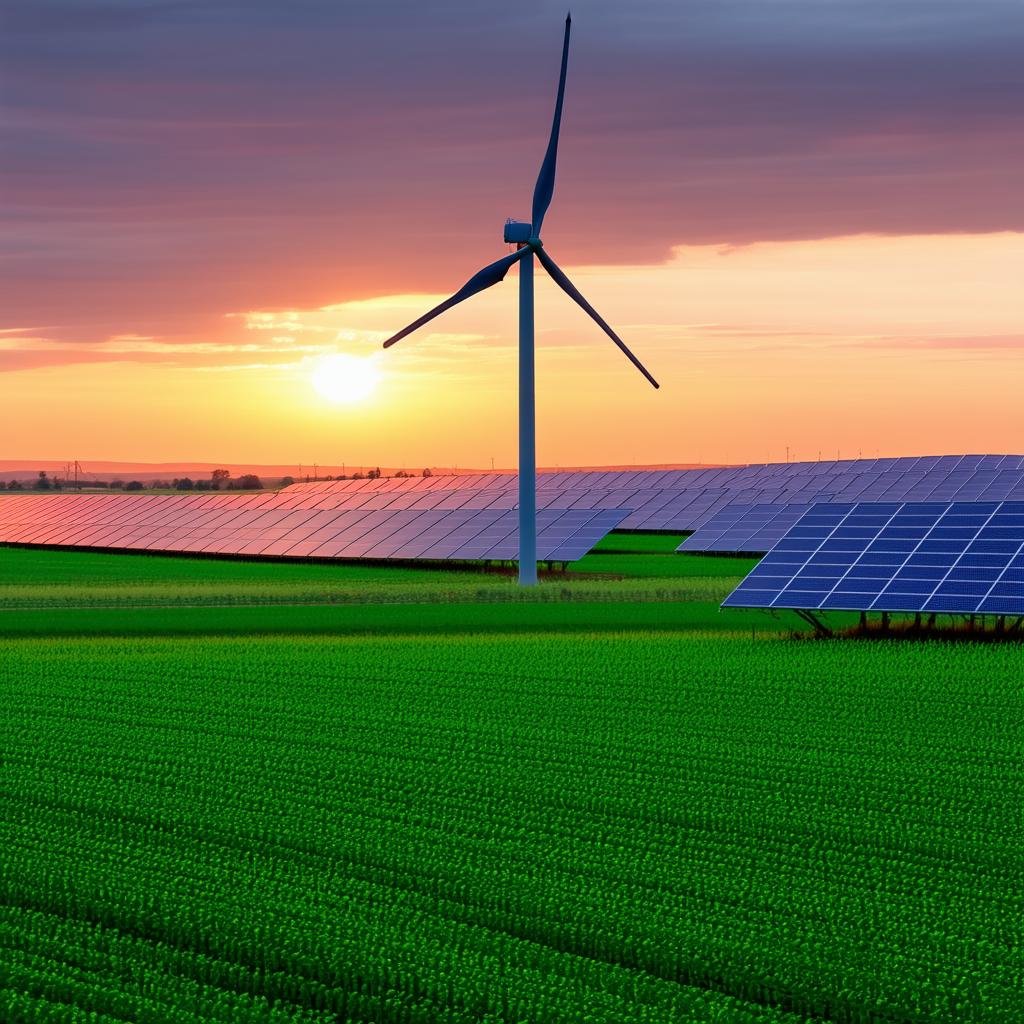Alternative Energy
A Comprehensive Exploration Alternative energy, also known as renewable energy, represents a crucial shift away from fossil fuels towards sustainable energy sources. This transition is driven by the urgent need to mitigate climate change, enhance energy security, and improve public health. This extensive exploration delves into the diverse facets of alternative energy, examining its various forms, technological advancements, economic implications, environmental impacts, and the challenges and opportunities surrounding its widespread adoption. I. The Urgency of Transitioning to Alternative Energy: The overwhelming scientific consensus confirms the detrimental effects of burning fossil fuels – coal, oil, and natural gas – on the global climate. These fuels release greenhouse gases, primarily carbon dioxide, into the atmosphere, trapping heat and causing global warming. The consequences are far-reaching and include rising sea levels, more frequent and intense extreme weather events (hurricanes, droughts, floods), disruptions to ecosystems, and threats to human health. Beyond climate change, reliance on fossil fuels creates geopolitical instability due to fluctuating prices and dependence on volatile regions. Furthermore, air pollution from fossil fuel combustion contributes significantly to respiratory illnesses and other health problems. The urgency of transitioning to alternative energy sources cannot be overstated. Delaying action will exacerbate the negative impacts of climate change, making mitigation efforts increasingly difficult and costly. A rapid and comprehensive shift towards renewable energy is essential to secure a sustainable future for generations to come. II. Major Types of Alternative Energy: Alternative energy encompasses a range of sources, each with its own characteristics, advantages, and limitations: A. Solar Energy: Solar energy harnesses the power of the sun through photovoltaic (PV) cells that convert sunlight directly into electricity, or through concentrated solar power (CSP) systems that use mirrors to focus sunlight onto a receiver, generating heat to produce electricity. * Photovoltaic (PV) Cells: These are increasingly efficient and affordable, making solar power a viable option for residential, commercial, and utility-scale applications. Advances in thin-film technology are leading to more flexible and adaptable PV systems. However, solar energy’s intermittency (dependence on sunlight) requires energy storage solutions like batteries or pumped hydro storage. * Concentrated Solar Power (CSP): CSP systems are particularly effective in regions with high solar irradiance. They can also incorporate thermal energy storage, allowing for electricity generation even after sunset. However, CSP plants require large land areas and can have high initial capital costs. B. Wind Energy: Wind energy utilizes wind turbines to convert wind’s kinetic energy into electricity. Onshore wind farms are widely deployed, while offshore wind farms are increasingly becoming a significant source of clean energy, offering higher wind speeds and less visual impact. * Onshore Wind Farms: These are relatively mature technology and cost-effective in suitable locations. However, they can face challenges related to land use, visual impacts, and noise pollution. * Offshore Wind Farms: Offshore wind farms offer higher capacity factors due to stronger and more consistent winds. However, they are more expensive to construct and maintain, requiring specialized vessels and infrastructure. C. Hydropower: Hydropower harnesses the energy of flowing water to generate electricity. It involves constructing dams to create reservoirs and using turbines to convert the potential energy of the water into electricity. * Conventional Hydropower: Large-scale hydropower plants are a mature technology and provide a reliable source of baseload power. However, they can have significant environmental impacts, including habitat destruction, alteration of river flows, and greenhouse gas emissions from flooded vegetation. * Small Hydropower: Smaller-scale hydropower plants offer a more environmentally friendly option, with reduced impact on ecosystems. However, they have lower power outputs and are suitable only for specific locations. D. Geothermal Energy: Geothermal energy taps into the Earth’s internal heat. It can be used directly for heating and cooling or to generate electricity using geothermal power plants. * Geothermal Power Plants: These utilize steam or hot water from geothermal reservoirs to drive turbines and generate electricity. They are a reliable and sustainable source of energy, but their geographic limitations restrict their widespread adoption. * Direct Use Geothermal: This involves using geothermal heat directly for heating buildings, greenhouses, and industrial processes. This is a cost-effective and environmentally friendly way to utilize geothermal energy. E. Biomass Energy: Biomass energy uses organic matter, such as wood, crops, and agricultural residues, to produce energy. It can be burned directly for heat or converted into biofuels (e.g., ethanol, biodiesel) for transportation. * Biofuels: Biofuels can replace fossil fuels in transportation, reducing greenhouse gas emissions. However, concerns exist regarding land use change, food security, and potential indirect greenhouse gas emissions. * Biomass Combustion: Burning biomass for heat is a relatively established technology, but it can contribute to air pollution if not managed properly. F. Ocean Energy: Ocean energy harnesses the energy of ocean waves, tides, and currents. Various technologies are being developed to capture this energy, including wave energy converters, tidal barrages, and ocean thermal energy conversion (OTEC) systems. * Wave Energy Converters: These devices capture the energy of ocean waves and convert it into electricity. However, they face challenges related to harsh marine environments and high maintenance costs. * Tidal Barrages: These are dams built across tidal inlets to harness the energy of tidal currents. They are a reliable source of energy but can have significant environmental impacts on marine ecosystems. III. Technological Advancements in Alternative Energy: Significant technological advancements are driving down the costs and improving the efficiency of alternative energy technologies: * Improved Solar Cell Efficiency: Research is focused on developing more efficient solar cells with higher conversion rates, reducing the land area required for solar power generation. Perovskite solar cells are a promising area of development. * Advanced Wind Turbine Design: Larger and more efficient wind turbines are being developed, capturing more wind energy and reducing the cost of electricity. Floating offshore wind turbines are expanding the potential for offshore wind energy. * Energy Storage Solutions: Advances in battery technology, pumped hydro storage, and other energy storage systems are crucial for addressing the intermittency of renewable energy sources. Flow batteries and compressed air energy storage are showing promise. * Smart Grid Technologies: Smart grids are essential for integrating renewable energy sources effectively into the electricity grid, optimizing energy distribution, and improving grid stability. * Artificial Intelligence (AI) in Renewable Energy: AI is being used to optimize the performance of renewable energy systems, predict energy production, and manage grid operations more efficiently. IV. Economic Aspects of Alternative Energy: The economic aspects of alternative energy are complex and multifaceted: * Initial Investment Costs: While the initial investment costs for renewable energy technologies can be high, they are decreasing steadily due to technological advancements and economies of scale. * Operating and Maintenance Costs: Renewable energy technologies generally have lower operating and maintenance costs compared to fossil fuel-based power plants. * Job Creation: The renewable energy sector is a significant job creator, providing employment opportunities in manufacturing, installation, maintenance, and research. * Economic Growth: Investments in renewable energy can stimulate economic growth, driving innovation and creating new industries. * Energy Independence: Transitioning to alternative energy can enhance energy independence, reducing reliance on imported fossil fuels and improving energy security. V. Environmental Impacts of Alternative Energy: While alternative energy sources are significantly cleaner than fossil fuels, they can still have environmental impacts: * Land Use: Solar and wind farms require significant land areas, potentially impacting ecosystems and habitats. * Water Use: Some renewable energy technologies, such as hydropower and CSP, require substantial amounts of water. * Wildlife Impacts: Wind turbines can pose risks to birds and bats, while hydropower dams can affect fish migration and aquatic ecosystems. * Material Extraction and Manufacturing: The manufacturing of renewable energy technologies requires materials, the extraction and processing of which can have environmental impacts. * Waste Management: The disposal of end-of-life renewable energy components requires careful management to minimize environmental harm. VI. Challenges and Opportunities in the Transition to Alternative Energy: The transition to alternative energy faces several challenges: * Intermittency: The intermittent nature of solar and wind energy requires efficient energy storage solutions and grid management strategies. * Grid Infrastructure: Existing electricity grids may need upgrades to accommodate the influx of renewable energy sources. * Geographic Limitations: The suitability of different renewable energy technologies varies depending on geographic location. * Policy and Regulatory Frameworks: Supportive policies and regulations are crucial to incentivize investment in renewable energy and overcome barriers to adoption. * Public Acceptance: Addressing public concerns about the visual impacts, noise pollution, and potential environmental impacts of renewable energy projects is essential for their successful implementation. Despite these challenges, significant opportunities exist: * Technological Innovation: Continued technological advancements are driving down costs and improving the efficiency of renewable energy technologies. * Falling Costs: The costs of renewable energy technologies have fallen dramatically in recent years, making them increasingly competitive with fossil fuels. * Policy Support: Many governments are implementing policies to support the transition to renewable energy, including subsidies, tax credits, and renewable portfolio standards. * International Collaboration: International cooperation is essential for sharing knowledge, technologies, and best practices in the field of renewable energy. * Economic Benefits: The transition to renewable energy offers significant economic benefits, including job creation, economic growth, and enhanced energy security. VII. The Role of Policy and Regulation: Effective policy and regulation are crucial for accelerating the transition to alternative energy. This includes: * Renewable Portfolio Standards (RPS): These mandates require electricity providers to generate a certain percentage of their electricity from renewable sources. * Feed-in Tariffs (FITs): These provide guaranteed prices for renewable energy generated, incentivizing investment in renewable energy projects. * Tax Credits and Incentives: Tax credits and other financial incentives can reduce the cost of renewable energy technologies and make them more attractive to investors. * Carbon Pricing: Putting a price on carbon emissions can encourage businesses and consumers to reduce their carbon footprint and adopt cleaner energy sources. * Grid Modernization: Investing in modernizing electricity grids is essential to accommodate the integration of variable renewable energy sources. * Research and Development: Continued investment in research and development is crucial for further improving the efficiency and reducing the costs of renewable energy technologies. VIII. The Future of Alternative Energy: The future of alternative energy is bright, with continued technological advancements, falling costs, and increasing policy support driving its widespread adoption. The integration of various renewable energy sources, combined with advanced energy storage and smart grid technologies, will play a crucial role in creating a sustainable and resilient energy system. The transition to alternative energy is not only an environmental imperative but also an economic opportunity, offering significant benefits in terms of job creation, economic growth, and energy security. Continued investment in research, development, and deployment of alternative energy technologies is essential to achieving a clean energy future. Furthermore, addressing the social and environmental impacts associated with renewable energy technologies will be crucial to ensuring their sustainable and equitable deployment. The global community needs to collaborate effectively to share best practices, overcome challenges, and accelerate the transition to a clean energy future for all. This involves not only technological innovations but also societal shifts towards sustainable consumption patterns and responsible resource management. The ultimate success of this transition will depend on the collective effort of governments, industries, and individuals working towards a shared vision of a sustainable and prosperous future powered by clean energy.











